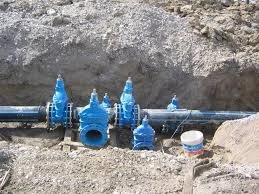సెప్టెం . 28, 2024 20:00 Back to list
Waste Pipe Fittings for Efficient Drainage Solutions in Plumbing Systems
Understanding Waste Pipe Fittings A Comprehensive Guide
When it comes to plumbing systems, understanding the various components that facilitate waste management is crucial for maintaining efficiency and preventing issues. Among these components, waste pipe fittings play a pivotal role. This article will explore the importance of waste pipe fittings, the different types available, and the best practices for installation and maintenance.
What are Waste Pipe Fittings?
Waste pipe fittings are specialized connectors used to join sections of waste pipes in plumbing systems. These fittings ensure that waste materials are directed efficiently from appliances like sinks, toilets, and showers to the drainage system. Proper installation of waste pipe fittings prevents leaks, clogs, and other plumbing issues that could lead to costly repairs.
Types of Waste Pipe Fittings
1. Elbows These fittings allow pipes to bend and turn at various angles, most commonly at 45 or 90 degrees. Elbows are essential in navigating obstacles and redirecting waste flow throughout a plumbing system.
2. Reducers Used to connect pipes of different diameters, reducers facilitate the transition from a larger pipe to a smaller one. This is crucial for ensuring that water flows smoothly without causing any back pressure.
3. Tees Shaped like the letter 'T', these fittings allow for branching off into two directions from a single pipe. Tees are typically used in situations where multiple sources of waste converge into a single drain line.
4. Caps and Plugs These fittings are used to seal the end of a pipe or fitting. Caps are used on the open ends of pipes, while plugs are used in fittings. They are essential for preventing debris from entering the pipeline system.
5. Wyes Similar to tees, wyes create a branching path, but with a gentler slope that allows for smoother waste flow. They are particularly useful in larger systems where minimizing resistance is vital.
6. Cleanouts These fittings are installed at strategic points in the plumbing system to provide access for cleaning out blockages or clogs. They usually have a removable cover that allows plumbers to insert tools and clear the lines easily.
Importance of Proper Installation
The importance of properly installed waste pipe fittings cannot be overstated. Incorrect installation can lead to several issues, including
- Leaks Poorly fitted joints can result in leaks, which can cause water damage and mold growth in the surrounding areas
.waste pipe fittings

- Clogs Using the wrong fittings or failing to seal connections properly can lead to clogs, which may slow down drainage and require extensive repairs.
- Odors Fittings that are not installed correctly can also allow sewer gases to enter living spaces, causing unpleasant odors and potential health hazards.
To ensure that waste pipe fittings are installed correctly, it is recommended to follow industry best practices, including
- Using the Right Materials Choose fittings made from durable materials that can withstand the conditions of waste disposal, such as PVC, ABS, or cast iron.
- Following Local Codes Adherence to local building codes and regulations is vital for ensuring that plumbing systems are safe and compliant.
- Hiring Professionals When in doubt, hiring a licensed plumber can save time and money in the long run. Professionals have the expertise and tools needed to install waste pipe fittings correctly.
Maintenance Tips
To keep waste pipe fittings functioning optimally, regular maintenance is essential. Here are some useful tips
- Inspect Regularly Periodically check for signs of wear, corrosion, or leaks at joints and connections.
- Clear Debris Make sure that no debris obstructs waste flow in pipes and fittings. Regularly clean out any accessible cleanouts.
- Monitor Drainage If you notice slow draining or gurgling sounds, it could signify a blockage that needs immediate attention.
Conclusion
Waste pipe fittings are fundamental components in plumbing systems, ensuring that wastewater is effectively transported away from homes and businesses. By understanding the types of fittings available and adhering to proper installation and maintenance practices, you can help ensure the longevity and efficiency of your plumbing system. Remember, when in doubt, it’s always best to consult with a professional to guarantee optimal results.
-
HDPE Culvert Pipe Supplier – Durable, Leak-Proof & Easy Installation Solutions
NewsJul.05,2025
-
High Transparency PVC Clear Sheet Super Transparency PVC Sheets & HDPE Cutting Board Supplier
NewsJul.04,2025
-
High-Quality PVC-M Pipe Supplier Trusted PVC Pipe Company & 75mm PVC Connection Pipe Solutions
NewsJul.04,2025
-
PVC Transparent Sheet Roll - Durable & Flexible PVC Plastic Sheet Roll for Industrial & Home Use
NewsJun.24,2025
-
High-Quality PVC PPR Pipes and Fittings Durable ERA PPR Solutions
NewsJun.10,2025
-
High-Quality Large HDPE Sheets & Large Diameter PVC Pipe Durable Large PVC Pipe Supplier
NewsJun.10,2025

